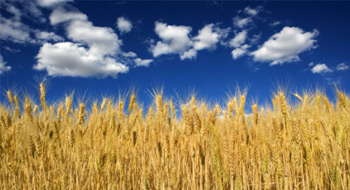

A large imbalance in supply and demand and a competitive environment for traditional alternative asset classes are leading institutional investors to look at more creative investment opportunities, including agriculture and farmland, renewable energy and middle-market private credit.
During a panel discussion at a CFA Society event in Toronto on Wednesday, Sandra Bosela, managing director and global head of private equity at OPSEU Pension Trust, said while the pension fund has significant investments in traditional alternatives, such as infrastructure and real estate, it’s also actively looking at other options.
With record levels of capital flowing into traditional alternatives over the past 15 years, the competitive market has resulted in record valuation levels, she said. “And that, coupled with low interest rates and availability of credit, has created this really frothy market in traditional alternatives. You’ve got a big appetite from those investors who are looking for that diversification, who are . . . looking at creative ways to find places to put their capital and earn attractive risk-adjusted returns.”
Read: Pension plans lukewarm on Canadian investments despite recent market strength
Speaking on the panel about agriculture and farmland, Antoine Bisson-McLernon, partner and chief executive officer at Fiera Comox, noted there are a number of elements that have attracted institutional investors to that area, including a low correlation to other asset classes and high Sharpe ratios, as well as the fact that arable land per person is decreasing all over the world. But there’s also the issue of scalability, especially for Canada’s largest investors.
“Even [the Canada Pension Plan Investment Board] recently decided to get out of farmland,” he said. “It wasn’t because they didn’t like the risk-return profile; it was about scale. Big institutions can wait until they find a blockbuster deal, but the problem is a $400-million plus deal in agriculture, you can wait a long time. When it does come up, all the big sovereigns are bidding on the same assets.”
Read: Navigating the complexities of investing in agriculture
Speaking at the event about renewable energy investments, Glenn Smith, managing director and president at Hancock Renewable Energy Group, noted it’s an area that gets a lot of air time. “But we’re looking at the lower-grade, non-traditional waste streams . . . agricultural waste, almond shells, almond husks. We do a lot of nut farming in California, so there are various streams coming off those activities,” he said, noting the asset class presents good risk-adjusted returns.
Ian Fowler, managing director and co-head of the North American private finance group at Barings LLC, spoke about the opportunities in middle-market private credit. “The asset class as a whole is really a growth engine for a lot of developed economies around the world,” he said.
Read: 2017 Top 40 Money Managers Report: Investing in the age of Donald Trump
The benefits of the asset class include lower volatility, higher risk-adjusted returns and structural protection, he added. “Fixed income isn’t paying much, if anything, these days, so a lot of investors have taken a portion of their fixed-income portfolio and invested in this asset class to increase the yield. Or some investors look at it as a way to diversify their alternative bucket.”
Indeed, one of the challenges noted by the panel was determining where to house those alternative investments in a portfolio. OPTrust is starting what it calls an incubation portfolio for that purpose, said Bosela. “So [agriculture] and farmland is one of them, and there’s a few others we’re looking at.”
Read: Caisse invests nearly $100 million in renewable energy
For renewables, many investors, including OPTrust, house the asset class in their infrastructure portfolio, said Smith. “As an example, we invested in [agriculture] and timber. We build a portion onto the backs of those investments to enable almost a trap door to come in with those renewable energy assets, to sort of bolt them on.”
Smith noted investors can also find partners to create direct investment platforms. “Teams that directly invest in infrastructure . . . they are an ideal partner when we identify an investment, to round out an investment club. That’s another way of getting people in. . . . You end up with . . . a combination of different investors to get it over the line. It’s still very much an emerging asset class for a lot of institutional investors.”
Bosela noted Canadian institutional investors are leading the way in terms of being more flexible and finding places within their portfolios, despite the fact that some of the alternative asset classes don’t necessarily fit into a particular bucket. “But as we continue to be in this very competitive market environment, investors are going to have to start looking at those opportunities if they want to continue to earn the strong risk-adjusted returns they did in the past.”
Read: Institutional investors expect more changes in asset allocations: survey
